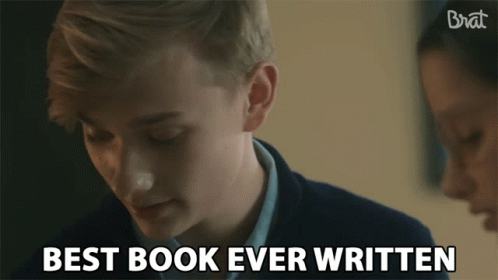In 2024, drowning in data is an everyday reality. But here’s a twist: the key to cutting through the noise isn’t about finding the newest, but the oldest. The Lindy Effect reveals that the longer an idea, technology, or practice has lasted, the longer it’s likely to survive. So, how do you find these time-tested gems and apply them to your decisions?
Understanding the Lindy Effect: A Timeless Principle
We often believe “new” means “better.” But does it?
If your grandmother offers life advice, chances are it’ll hold up. Timeless ideas, strategies, and principles have a higher probability of lasting.
The Lindy Effect suggests that the longevity of non-perishable things—like ideas or technologies—is an indicator of their likelihood of continuing to endure.
In other words, the longer something lasts, the longer it’s likely to stick around.

This principle flips aging on its head. Unlike people, ideas don’t get old; they often get better.
The internet is bursting with noise, and filtering out the signal—the meaningful content that helps you make better decisions—is becoming harder by the day. Lindy Effect is the filter.
🚨 Quick sidebar: Enjoying what you’re reading? Sign up for my newsletter to get similar actionable insights delivered to your inbox, for free!
Psttt, you will also get a free copy of my ebook, Framework for Thoughts, when you sign up!
The Origin of the Lindy Effect: From Cheesecake to Wisdom
Originating from a 1964 article by Albert Goldman1
The original article on Lindy’s Law by Albert Goldman, the concept took its name from Lindy’s, a famed New York deli at Broadway and 51st. This was where comedians analyzed their acts over cheesecake.
Goldman noted a paradox: TV comedians with frequent gigs tended to fade quickly, while those who limited their appearances often enjoyed longer careers.

Albert Goldman coined the term in a 1964 article, but it was Nassim Taleb who later popularized the concept in his book Antifragile, where he observed:
This, simply, as a rule, tells you why things that have been around for a long time are not “aging” like persons, but “aging” in reverse. Every year that passes without extinction doubles the additional life expectancy.
This suggests that enduring technologies or ideas don’t just age out of value; they improve with time.
Common examples of the Lindy Effect include:
- The timeless wisdom of The Art of War—although the physical book may wear out, the strategies remain just as relevant.
- The basic design of the chair, which has survived 5,000 years without much change.
- The Hero’s Journey, a storytelling archetype used both in Homer’s Odyssey and George Lucas’s Star Wars.
Where the Lindy Effect Doesn’t Apply: Recognizing Limits
The Perishability Paradox
Only the nonperishable can be Lindy-compatible. You cannot apply the Lindy Effect to perishable items.
For example, if you survive for another year your future life expectancy generally decreases. You are not going to age in reverse (like Benjamin Button).

It’s crucial to recognize when survivorship bias and other logical fallacies might mislead us in applying the Lindy Effect. Understanding these biases is key to making better decisions. Read more on logical fallacies here.
Heuristic, Not Law
It’s important to remember that the Lindy Effect is a heuristic, not a strict rule. Things can still end abruptly despite their long history.
- The music charts show that a number one single can and will drop off the top charts even if it has been at number one for many weeks.
- Even though Lehman Brothers was founded in 1847, it went bankrupt over a weekend.
- If you are diagnosed with cancer, seek chemotherapy rather than relying on ancient Roman medical practices.
The Lindy Effect works on your protection, urging you to step back amidst the relentless surge of modern technologies, new products, and ideas, and ask yourself, “Has this lasted long enough for me to pay attention?”
Now, let’s see how to apply the Lindy Effect to your life.
How to Find Lindy Effect Ideas in a World of Endless Noise
News: The Trap of Constant Updates
News functions like a drug, convincing us that its consumption enhances our knowledge and contributes to our personal development. In reality, the effect is quite the opposite.
We are bombarded with constant updates, covering events from corners of the globe we’ll likely never visit, and broadcasting mundane local incidents as “breaking news”.

News media are battling with social media for our attention aiming to scoop up a larger slice of advertising revenue. Their strategy? Share more negative news to fill your brain with ideas that are just average but presented in a way that makes you feel wiser.
But here’s the truth: Consuming more news makes us less well-informed.
Taleb calls it the noise bottleneck: As you consume more data, the noise-to-signal ratio increases, so you end up knowing less about what is actually going on.
Here’s an astonishing fact: a single daily edition of the New York Times in 1979 contained as much information as an educated person from the 16th century would encounter in a lifetime2Video from Bell Labs in 1979..
1979! Before smartphones, social media, and the flood of modern data. Fast forward to 2024, and we’re drowning in information. Lindy Effect will help you separate the essential from the ephemeral.
Want to know more about the world? Turn off the news.
So, what do you do instead? You buy books.
Books: The Timeless Source of Wisdom
Now you’re in search of a book recommendation—what’s your next step? Perhaps you turn to Google or Amazon, scanning reviews and ratings to decide.
Maybe you have friends (maybe?) and ask them for their suggestions. But have you considered how they find their book recommendations? Most likely, they too start with a search.

Keep in mind, that Google’s algorithms tend to prioritize recent content. Unless you specifically search for “books written in the 16th century,” the results are skewed towards newer publications.
This recency bias isn’t just a quirk of search engines; it also affects how writers conduct their research because they use the same tools!
This influence extends to writing styles as well. Take, for instance, the prevalence of ‘Malcolms’—lengthy anecdotes that set the stage for a chapter, named obviously after Malcolm Gladwell3The Tyranny of Malcolms..
If you’ve read mainstream nonfiction in the last two decades, you’ve likely encountered the Malcolm method, whether you realized it or not. Even I did it in my newsletter on Opportunity Cost below.
Books are starting to read and feel similar, as the content, ideas, and techniques used are recent.
If you only read the books that everyone else is reading, you can only think what everyone else is thinking.
Haruki Murakami
Applying second-order thinking can help us evaluate the long-term consequences of our choices, much like how the Lindy Effect encourages us to focus on ideas that have withstood the test of time.
Timeless Knowledge: Finding Ideas That Last
So, what to do about it? Haruki Murakami writes about it in Norwegian Wood:
I don’t want to waste valuable time reading any book that has not had the baptism of time. Life is too short.
Time is a natural filter for value. If something has been around for a long time, it means it is still important in some way. It’s worth knowing.
Read the Lindy books–older books have stood the test of time.
As humans get older, we have less time to live. But ideas don’t have a lifespan.
Avoid books heavily promoted by influencers and bypass the daily news cycle. Instead, opt for books that have stood the test of time—those that have been influential for over two decades and continue to be referenced.
That way, you can be pretty sure that what you’re learning will still be relevant decades from now.
I use the Lindy Effect framework sometimes when picking books that I am planning to read (you can find my favourite books here!).
Applying the Lindy Effect to Money, Business, and Investing
Lindy Effect and Money: Timeless Value in Gold and Bitcoin
The Lydians first used gold as a reliable way to store value, making it easier to buy goods without bartering. Gold has been valued for centuries, and according to the Lindy Effect, suggesting that it will remain precious for the foreseeable future.

And what about Bitcoin? The longer it remains significant, the more likely it is to continue being significant.
Lindy Effect in Business: Why Longevity Equals Success
The Lindy Effect isn’t just for theories and books—it thrives in the boardrooms too. The idea is simple: the longer a company has been around, the better its chances of sticking around even longer.
Take new startups, for instance. They’re notoriously prone to early exits. Yet, every year they keep their doors open, their odds of enduring improve dramatically. It means they faced a crisis, management changes, competition, and expansion and survived.
Jeff Bezos tapped into the Lindy Effect when shaping his business strategy:
I very frequently get the question, “What’s going to change in the next ten years?” And that is a very interesting question; it’s a very common one.
I almost never get the question, “What’s not going to change in the next ten years?”
And I submit to you that that second question is actually the more important of the two…
You have to look for ideas that have stood the test of time.
Investing with the Lindy Effect
Warren Buffett famously refused to invest in the tech bubble in the late 90s and early 2000s. Everyone around him was making a bank in the market. We all know what happened next.
He suggests investing in companies in your Circle of Competence, having a strong moat, and good management. A moat and strong management culture is built over a long period.
You will never hear Buffett suggest this:

The Lindy Effect helps you avoid speculative bubbles and short-lived trends.
Creating for Centuries: The Lindy Effect for Creators
If you’re a creator—whether writing, art, or building a product—aim for work that will stand the test of time. A perennial seller. Be a Lindy creator.
As a writer, I am not judged by other writers and reviewers, but by readers. Not just today’s readers but also, those of tomorrow, and the day after tomorrow. So, the real judge of my work is… time.
As a creator, the Lindy Effect should inspire you to craft ideas that last—transforming noise into timeless signals.
Embrace Timeless Wisdom Over Fleeting Trends
Timeless ideas outlast trends. In a world obsessed with the latest and loudest, the Lindy Effect is your filter for lasting knowledge. Remember, today’s shiny new tools won’t always stand the test of time, but ancient wisdom will.
As Jeff Bezos said, the most important question isn’t what will change, but what will remain. And in the world of ideas, it’s time that answers that question best.
Footnotes:
- 1
The original article on Lindy’s Law by Albert Goldman - 2Video from Bell Labs in 1979.
- 3




